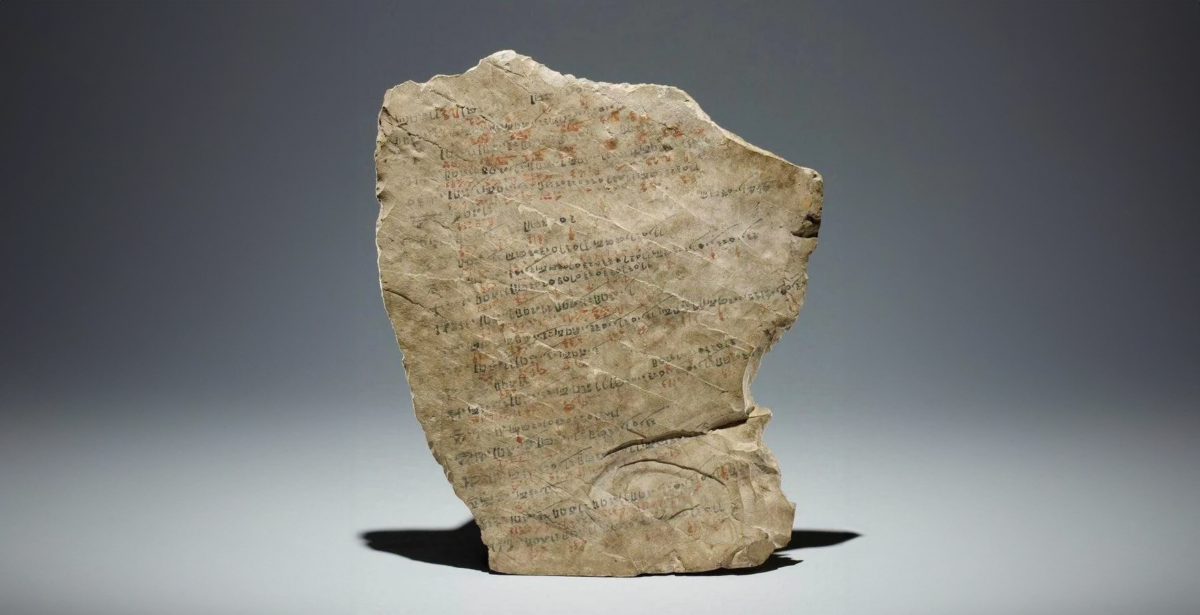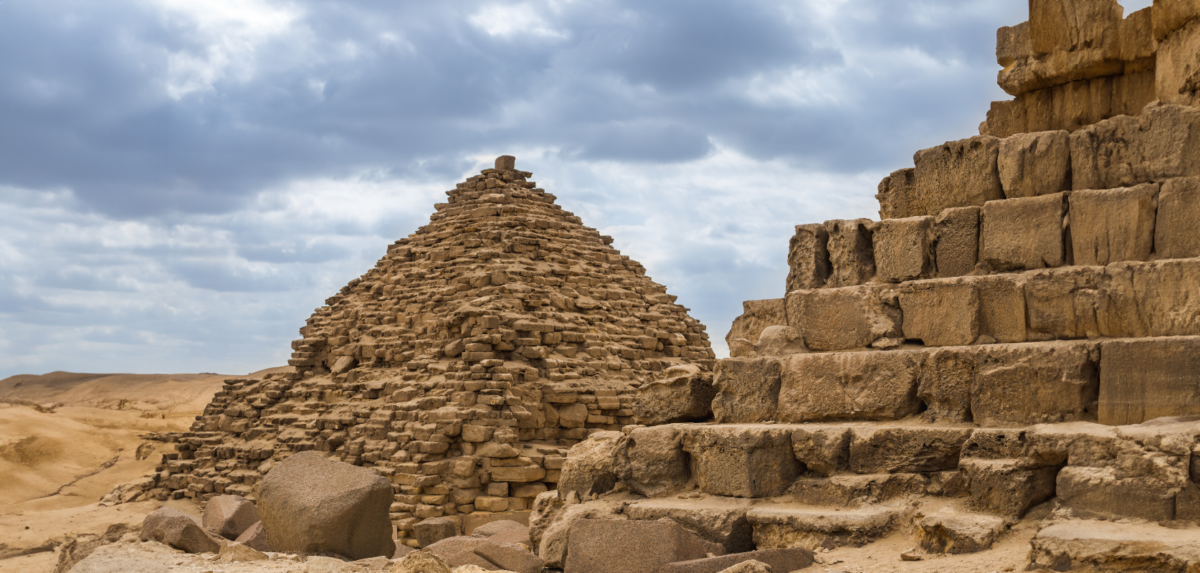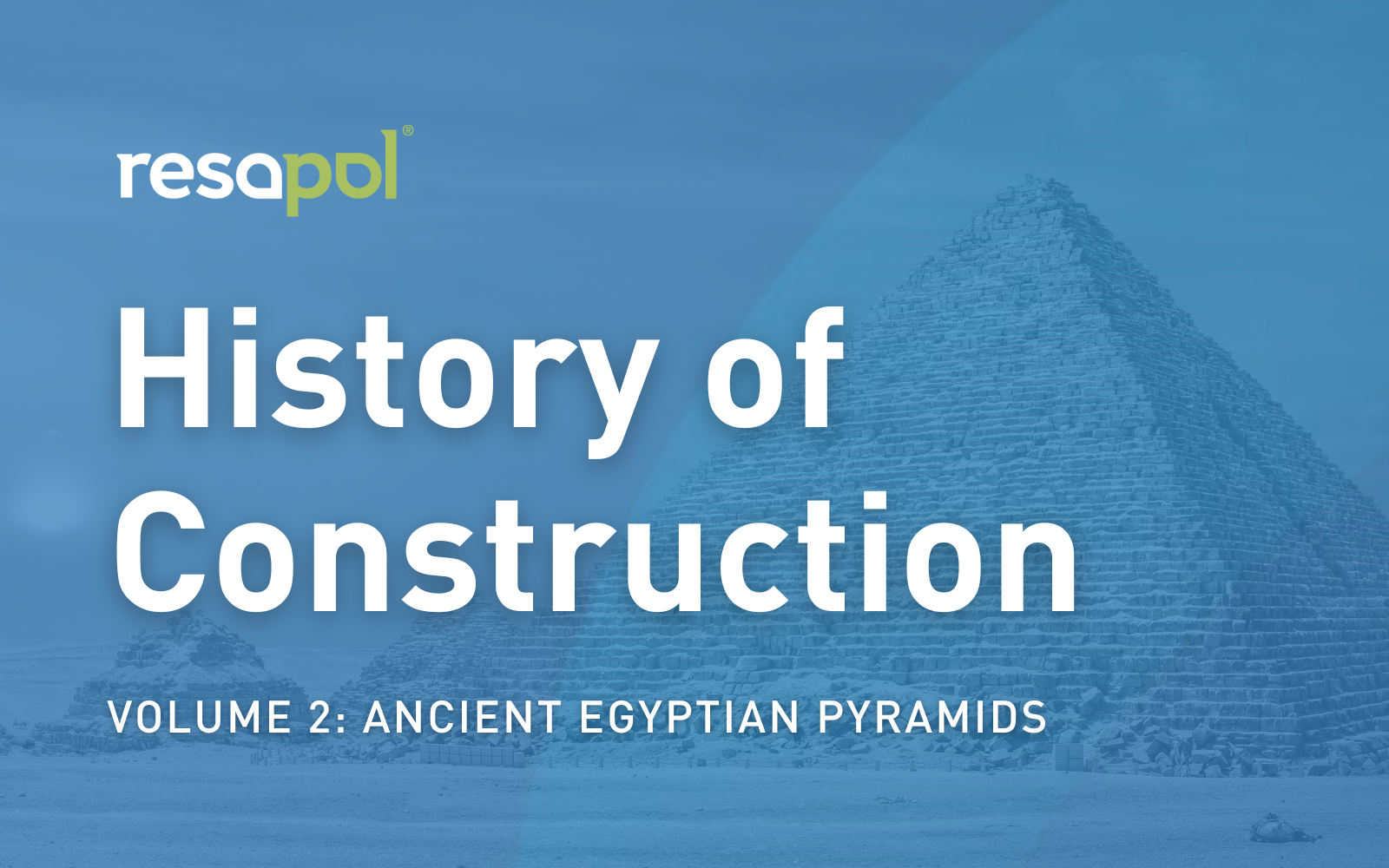BENEATH THE
SANDS OF TIME:
THE ANCIENT EGYPTIAN PYRAMIDS
Welcome to the second instalment of our series, “The History of Construction”, where we journey back in time to explore some of the world’s most iconic and mysterious architectural marvels; the ancient Egyptian pyramids. From the iconic Great Pyramid at Giza, to The Bent Pyramid at Dahshur, these structures have fascinated generations and left us wondering about the construction methods and materials they used. Join us as we delve into the mysteries of the ancient Egyptian pyramids; uncovering the secrets and theories that have puzzled historians, archaeologists, and engineers for centuries.
The Mysteries of the Pyramids
The construction of the ancient Egyptian pyramids remain a riddle shrouded in mystery. Historians universally agree on one consensus: no one truly understands how they constructed the pyramids. This is not due to the impossibility of constructing these structures. It is rather because there are numerous potential methods that could have been utilised, the evidence to fully support one theory over another remains inconclusive.
One key factor contributing to their mystery is that they were not all built in the same way. The construction of these monuments spanned a significant period in history. Methods for building them evolved, much like construction methods quickly evolve in our modern era. Intriguingly, the ancient Egyptians didn’t document the construction process, leaving us with a significant gap in our understanding. Although we can suggest different methods based on the technology available at the time, we may never fully know how the Egyptians brought these marvels to life.
Debunking the Myth of Slave Labour
One myth we can dispel is that the pyramids were built purely by slaves who lived gruelling and harsh lives. Egypt, a land rich in agriculture thanks to the fertile Nile Delta, provided its residents with relatively ample food resources. As a result, Egyptian farmers had more time during the year to engage in other activities. People formed work gangs and offered their services as stone masons for large construction projects such as the pyramids.
In fact, there’s evidence to suggest that the workers who built the pyramids were not slaves but skilled laborers who enjoyed reasonable working conditions. Archaeologists have found remnants of work camps that provide evidence supporting this theory. They have also uncovered graffiti that reveals the workers’ celebrations of their work gang’s progress. This suggests that they were part of a much larger and organized workforce.

Excuses from a 3,250-year-old tablet in ancient Egypt where workers’ reasons for not coming to work include: “His mother is being mummified.” “Brewing beer.” “Bitten by a scorpion.” “His eyes are hurting.”
Ancient Egyptian society was hierarchical, and laborers, skilled artisans, and engineers all played their respective roles. Tens of thousands of workers, including stone masons, quarrymen, and haulers worked diligently to bring the vision of the pharaohs to life. Although there was a theory that slaves made up the majority of the workforce, it has since been dispelled. However, it is possible that they were also utilised.
The Stone’s Journey to the Pyramid
One of the fundamental aspects of pyramid construction was the acquisition and transportation of massive stone blocks. The ancient Egyptians displayed their expertise in managing water, utilising huge rivercraft and canals for this purpose. Although there is no evidence of the use of wheels during that period, experts believe that people moved these stones short distances through manual labor and by using an ingenious application of levers and ramps.
To move the giant stone blocks, they would roll them onto a track laden with round logs whilst people pull it. Workers would sail blocks one at a time along the Nile River. The river’s path used to be slightly different thousands of years ago, some of the pyramid temples have docks that used to stick out into the river. They would likely roll the blocks onto logs again for the last couple of hundred meters, from temple dock to the pyramid, before ramping them up onto the pyramid and sliding them into place.
The most significant challenge was lifting the stone blocks vertically to stack them in the formation that defines the pyramids. The absence of evidence for wheels or cranes from this period has led researchers to explore various other theories. French architect Jean-Pierre Houdin established the use of extensive internal ramps, which currently prevail as the main design concept. However, the precise design and construction of these ramps remain unclear, and alternative lifting mechanisms cannot be ruled out.

The internal ramp theory. A winding ramp was created within the structure allowing stones to be hauled to their desired position.
The ancient Egyptians had access to a wealth of building materials. Their choice of materials for the pyramids was a testament to their knowledge and craftsmanship. The primary stone used was limestone, sourced from quarries in Tura and Maadi, close to the construction sites. The architects used limestone, granite, and basalt to construct the interior chambers and passageways. Granite, renowned for its durability, was likely quarried in Aswan, located farther south along the Nile.
The ancient builders cut the soft local limestone using copper or bronze chisels. They cut channels either side of the block and deepened them. Then, they separated the blocks from the bottom by hammering wooden wedges in from the sides. They subdivided the blocks to suit their purpose to ensure the pyramid was mostly uniform in shape.
The builders of the Great Pyramid roughly shaped the majority of stones used in its core to avoid the need for finishing. They laid the stones in a rough mortar made from desert gypsum called Tafl. For the outer encasing, they used a fine white limestone from quarries on the East bank of the Nile at Tura, which gave the pyramid a radiant appearance. They roughly shaped the limestone blocks before transport and then finished and polished them after placing them on the pyramid.

A Testament to Human Achievement
The ancient Egyptian pyramids remain as symbols of human achievement and architectural skill. Despite our modern knowledge and technology, we are still not sure about the methods the ancient Egyptians used to construct the pyramids. However, evidence suggests they combined ingenuity, skilled labuor, and the use of large ramps. The fact that their construction methods are still a subject of discussion and speculation today is a testament to the Egyptians’ skill and ingenuity.
As we continue our journey through the history of construction, our next volume of “The History of Construction” will take us to the mighty Industrial Revolution in the United States. We will delve into changing construction techniques, from manual labour to a greater degree of industrialisation.
We hope you will continue to follow us on this journey.

References:
Jean-Pierre Houdin – The Ramp Theory:
https://archive.archaeology.org/0705/etc/pyramid.html
https://archive.archaeology.org/0907/etc/khufu_pyramid.html
